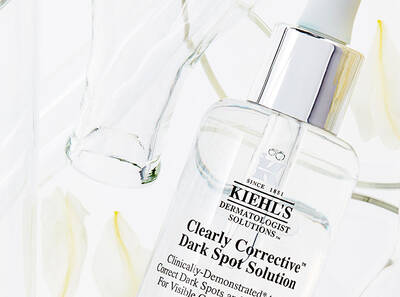Fact Vs Fiction: How Vitamin C Benefits Your Skin – Kiehl’s
Types of Vitamin C in Skincare

Pure Vitamin C
L-Ascorbic Acid, or Pure Vitamin C, is a powerful skincare ingredient that easily absorbs into skin and begins working immediately. A dermatologist-recommended ingredient, L-Ascorbic Acid is frequently used in anti-aging skincare products to improve radiance and skin texture while helping to diminish the appearance of fine lines, wrinkles and crow’s feet. Pure Vitamin C is also a potent antioxidant that helps protect the skin from free radical damage caused by UV rays and pollution.

Vitamin Cg
Vitamin Cg, or Ascorbyl Glucoside, is a potent derivative of Vitamin C that provides antioxidant protection and helps to minimize the visible signs of aging. Kiehl’s Powerful-Strength Line-Reducing Concentrate is formulated with 2% Vitamin Cg to help enhance the efficacy of Vitamin C benefits over time.IV It is also found in our customer-favorite men’s moisturizer.

Activated C
Activated C is a next-generation Vitamin C derivative that is highly efficacious. Within our formulas, this powerful form of Vitamin C penetrates skin’s surface and is known to help fade dark spots and skin discolorations. Activated C is a key ingredient in Kiehl’s dark spot corrector and brightening face mask.
*With 10.5% Pure Vitamin C and 2% Vitamin Cg
**Study based on detecting the presence of Vitamin C after tape stripping of skin surface layers.
***Results based on the inhibition potential of sebum peroxidation compared to untreated skin using a polluted model consisting of UV and cigarette smoke.
I Collagen Metabolism. Diegelmann, RF. 5, 2001. Wounds, Vol. 13.
II Topical vitamin C in aging. Colvin, RM and Pinnell, SR. 1996, Clin Dermatol, Vol. 14, pp. 227-234.
III Enzymatic and non-enzymatic antioxidants in epidermis and dermis of human skin. Shindo, Y, et al. 1994. J Invest Dermatol, Vol. 102, pp. 122-124.
IV Double-blind, half-face study comparing topical vitamin C and vehicle for rejuvenation of photodamage. Fitzpatrick, RE. and Rostan, EF. 3, 2002. Dermatol Surg. Vol. 28, pp. 231-236.
